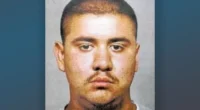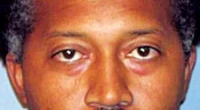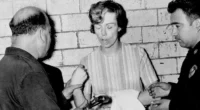In 2000, the public in the state of Indiana (USA) was shocked by a bloody massacre when a woman and her two children were killed in their own home. Shortly thereafter, authorities identified the woman’s husband, David Camm, as the ruthless murderer, despite the defendant’s claims of innocence. After numerous trial sessions and 13 years of proclaiming his innocence from behind bars, justice finally caught up with this man.
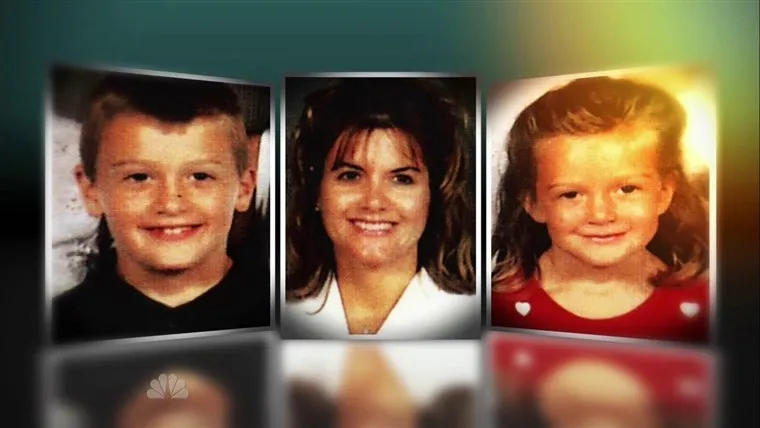
A Horrific Evening
In early 2000, David Camm resigned from the Indiana State Police after 10 years of service. He was highly respected by his colleagues, having served on the Emergency Response Team (ERT) and being awarded a Medal of Valor for his efforts. However, David decided to leave his job to work for his uncle’s company as a supervisor, with a salary twice that of a police officer.
David had been married to Kimberly Camm for 11 years and they had two children, Bradley (7 years old) and Jill (5 years old). Kimberly was a highly regarded financial analyst at a major insurance company. Their children were described as adorable and well-behaved. To those around them, the Camm family seemed to lead a fairly perfect life.
On September 28, 2000, after a busy day at work, David left home to play basketball with 11 others. He arrived at the court at 6:59 PM, just a 5-minute drive from home.
After the game, David drove back to their home in Floyd County, Indiana, around 9:20 PM. When the garage door opened, David was horrified to find a scene he would never forget. His wife lay lifeless on the ground with blood on her head and no pants on. In the car next to her, David found their two children.
“I bent down to my wife’s face and yelled, ‘Kim, Kim!’ Looking into her eyes, I knew it was too late,” David later told the police.
Suspicious Scene
David tried to quickly assess what had happened and in his confused state, frantically got into the car. He noticed that his son Bradley had been shot in the chest and his daughter Jill had a large head wound similar to his wife’s. With his 10 years of police experience, David later stated that he knew his wife and daughter were already dead. He quickly pulled Bradley out of the car and performed CPR. Then he ran into the house to call the police directly and ran across the street to call relatives.
Around 9:30 PM, the police arrived at the scene, confirming that all three victims had been shot dead. Jill’s genital area showed signs of trauma, but it couldn’t be concluded whether she had been sexually assaulted. Kimberly was not wearing pants, but there were no signs of sexual assault. Kimberly’s shoes were placed neatly on the car roof.
According to experts, the blood under the floor seemed to have been cleaned up, as if someone wanted to cover up evidence. On the floor, police found a long-sleeved gray sweatshirt. This sweatshirt did not belong to anyone in the Camm family.
On the T-shirt David Camm was wearing at the time, investigators found 8 small bloodstains later determined to be Jill’s blood. However, experts stated that these were not ordinary bloodstains. The blood drops on Camm’s shirt were said to be high-velocity blood spatters, only appearing if Camm was standing nearby when his daughter was shot.
With other clues, suspicion began to focus on David Camm, just 3 days after the bloody massacre occurred.
The Two-Faced Man
Three days after the deaths of Kimberly Camm and her two children, Bradley and Jill, suspicion turned towards their husband and father, David Camm.
On the shirt David was wearing when he discovered the murder, investigators found 8 small bloodstains later identified as Jill’s blood. However, experts believed these were not ordinary bloodstains. The blood on David’s shirt was deemed to be high-velocity blood spatters, indicating that David was close by when his daughter was shot.
Initially, police believed the time of the crime was 9:20 PM when David returned home, coinciding with a neighbor’s statement of hearing gunshots between 9:15 PM and 9:30 PM. However, autopsy results showed that the actual time of death for the victims was around 7:30 PM to 8:00 PM, when Kimberly and the children had just returned home. With this information, police theorized that David, while at the basketball game, left to commit the crime and quickly returned to establish an alibi.
The call history from the home landline phone also supported this hypothesis. David made a call to a customer around 7:19 PM when his wife and children were not yet home, and according to David’s statement, he should have been at the basketball court.
David consistently maintained that he had no reason to kill his wife and children, as he was a happy man since meeting Kimberly. However, the information gathered by the police contradicted his claims.
The couple married in 1989, and shortly after, their first son was born. Three years into their marriage, David began an affair with a woman he met at the gym while Kimberly was pregnant with their second child.
David then moved out, but a few months later, the couple reconciled, and things went back to normal. Their family life improved when David left his job as a state trooper to work for his uncle’s construction business. He earned more money and had more time for his family. Their life seemed perfect to those around them.
However, during the murder investigation, police revealed David’s secret. It seemed that this man led a double life. On one hand, he appeared to be a faithful husband, but in reality, he frequently flirted with other women. Over the years, he had been involved romantically with several women.
The 195-Year Sentence
In January 2002, over a year after the murders, David Camm’s trial began. Prosecutors believed that David’s infidelity was a motive for the murders. Additionally, David stood to gain a $750,000 life insurance payout if his family members died. Alongside evidence of the blood spatter on his shirt, prosecutors called 12 women to testify about David’s advances or extramarital affairs.
David’s defense attorneys argued that he had no opportunity to commit the crime. All 11 people at the basketball game testified that David was there from 7:00 PM to 9:00 PM, the time the murders occurred, and did not leave.
Regarding the bloodstains of Jill on David’s shirt, the defense argued that David got splattered when pulling his son out of the car.
Furthermore, a crucial discovery was made regarding the timing of David’s call from the home landline phone. It was revealed that David made the call not at 7:19 PM, but at 6:19 PM. This discrepancy was due to Indiana spanning two time zones, and the phone company recorded the call in the later time zone. With the call at 6:19 PM, David was still at home and had not gone to play basketball.
Additionally, authorities confirmed that the DNA on the shirt at the crime scene did not belong to David. And they were unable to determine whose palm print was on Kimberly’s car.
However, the defense’s efforts were not enough to convince the jury with the evidence they deemed strongly incriminating David Camm. On March 17, 2002, David was convicted of murder with a sentence of 195 years in prison, despite his continuous claims of innocence.
Crucial Discovery
The defense’s efforts and David Camm’s claims of innocence regarding the murder case could not persuade the jury against the strong evidence they believed incriminated David. On March 17, 2002, David was convicted of killing his wife and two children with a 195-year prison sentence.
During his time in prison, David Camm continued to proclaim his innocence. By August 2004, the Indiana Court of Appeals overturned the previous verdict and ordered a retrial. The appeals court concluded that the prosecutor calling 12 women to testify about David’s infidelity had prejudiced him, affecting the conviction. David’s infidelity was not related to the deaths of his wife and children.
Furthermore, the DNA sample on the gray shirt found at the crime scene, initially determined not to be David’s in the first trial, was reexamined. Authorities compared this DNA sample to the national database, and it ultimately matched a criminal named Charles Boney. In 1989, Boney was convicted of robbery. In 1993, he was again sentenced to 20 years for three counts of armed robbery and three other felonies. At the time of the Camm family murders, Charles was on parole after being released.
Additionally, Charles was known to have a history of violent crimes against women. Particularly, he had a peculiar interest in women’s feet, often stealing shoes from his victims, which could explain why the victims’ shoes were neatly placed on the car roof, and Jill had bruising on her feet.
With this new discovery, David Camm thought that after 5 years in prison, he would finally be vindicated and set free. However, this only complicated the case further.
The Difficult Path of Proclaiming Innocence
When summoned, Charles admitted to having been given the sweatshirt while in prison but claimed to have donated it to a charity organization before the murders occurred. He denied involvement in the killings.
When police revisited David’s wife’s car and found Charles’s palm print on it, Charles changed his statement. He confessed that on the night in question, he had driven to the crime scene to sell David the murder weapon. Charles claimed he was outside the garage when David shot the victims.
Both Charles and David were subsequently charged with murder. In 2005, Charles was brought to trial and sentenced to 225 years in prison.
At the second trial in 2006, prosecutors presented Charles’s testimony and continued to present evidence of high-velocity blood spatter on David’s shirt. This time, prosecutors accused David of sexually assaulting his daughter, based on trauma in the genital area. Afraid of being discovered for molesting his daughter, David bought the gun from Boney and committed the murders to cover it up. David lured Boney to the house to set him up.
In rebuttal, David’s defense attorneys pointed out that there was no evidence to show that David had ever assaulted his daughter. If the girl had been assaulted, the perpetrator was Charles, a repeat offender against women. Charles was the sole perpetrator in the case.
But once again, despite these defenses, David was convicted and sentenced to life imprisonment without parole in March 2006. This meant that David’s journey to proclaim innocence continued.
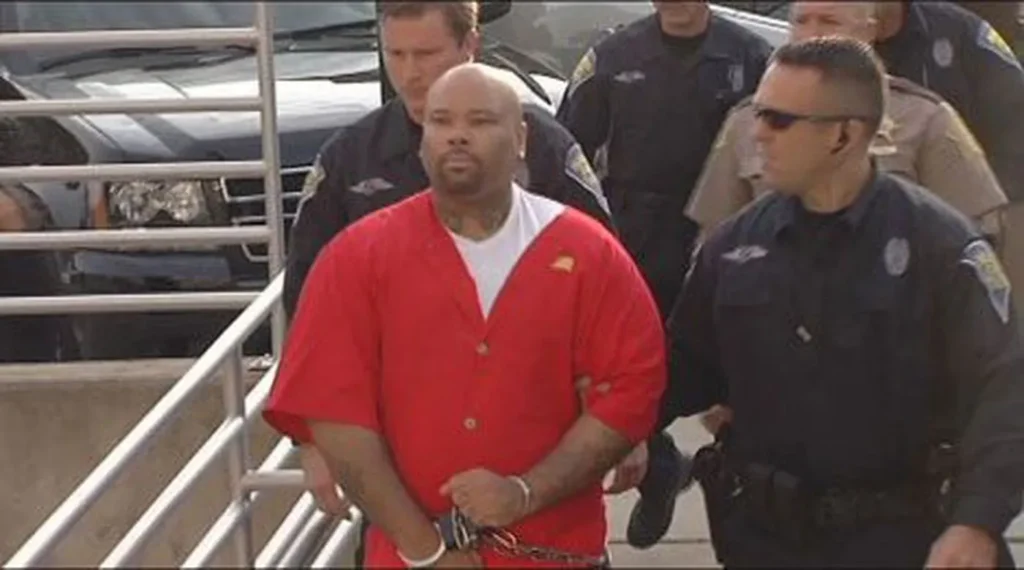
Third Appeal
After an unsuccessful second appeal, David Camm remained undeterred in his quest to proclaim his innocence for the murder of his wife and two children.
Ultimately, David’s second conviction was again overturned by the Indiana Supreme Court, and a third retrial was ordered. The court deemed the prosecutor’s allegations of David assaulting his daughter as speculative and prejudicial to David’s defense.
In 2013, David’s third trial took place. This time, the prosecution accused David of committing the crime to collect his wife’s life insurance money, then staging the scene to frame Charles Boney.
Testifying in court, Charles recalled that on the night in question, upon David’s request, he brought a gun to the house and handed it to David. Charles stated he was outside when David killed his wife and children in the garage. After the crime, David, realizing Charles had witnessed everything, aimed the gun at Charles and attempted to kill the witness. However, the gun unexpectedly jammed, and Charles quickly seized the opportunity to flee into David’s garage.
Upon entering, Charles saw Kimberly’s body and noticed her shoes, which he picked up and placed on the car roof. Looking inside the car, Charles saw the two children were dead. At that moment, Charles leaned against the car wall, leaving his handprint, but he didn’t touch any of the bodies. He then hurriedly left the scene, fearing David might find him.
Justice Delayed

David Camm rejoiced at being exonerated of the murder of his wife and children after 13 years in prison.
However, Charles’s testimony contained several inconsistencies. Charles’s DNA was found on Kimberly’s underwear, shirt sleeves, and under her fingernails, as well as on Jill’s shirt. This contradicted Charles’s claim of not touching any of the bodies.
Furthermore, the expert who initially identified the blood spatter on David’s shirt as high-velocity blood admitted to being only a crime scene photographer, not a blood spatter analyst. They also conceded that the perceived cleanup of blood at the scene was incorrect, as it was merely a result of blood exposure to air over time.
Four subsequent forensic analysts collaborated and concluded that the blood evidence was not substantial. “They completely fit what David has been saying from the beginning. He reached across his daughter while pulling his son out of the car,” one of the experts affirmed.
Finally, on October 24, 2013, after careful consideration of the evidence, the jury concluded that Camm was not guilty on all counts. David Camm had spent 13 years in prison.
Though justice was delayed, it provided David and his loved ones with some comfort, as it not only proved David’s innocence but also revealed the true perpetrator of the murders. Before that, no one knew what had transpired in the garage on that fateful night. David was also compensated for his losses after reconciling with the Floyd County government.
Meanwhile, Charles Boney was convicted of murder with a 225-year prison sentence. The 13-year-long case had cost over 2 million USD.

